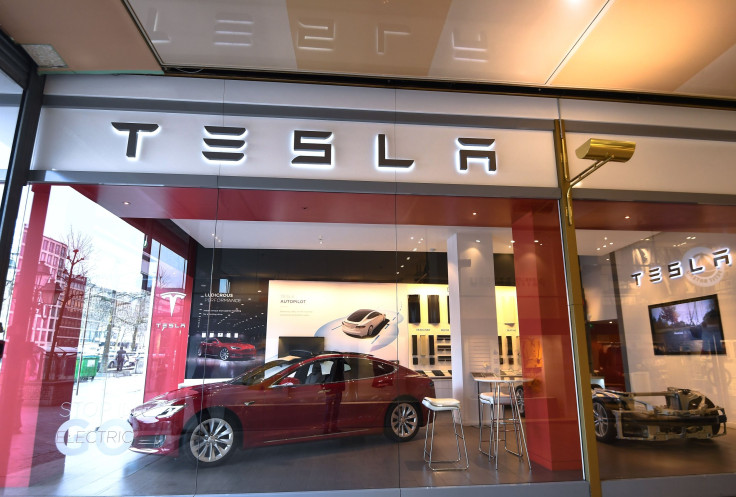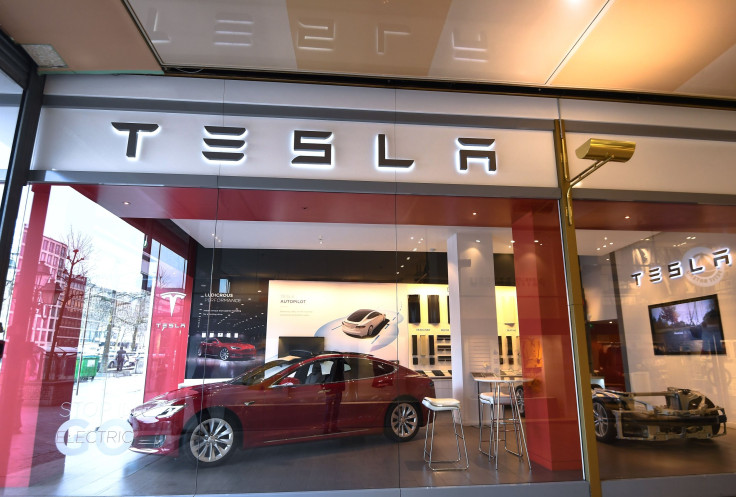Tesla Model 3 Production Rate: 3,000 Units Per Week?

Electric-car maker Tesla's (NASDAQ:TSLA) Model 3 production stumbled out of the gate, with the automaker significantly missing its first targets. Initially, Tesla was aiming to wrap up 2017 producing Model 3 at an average rate of 5,000 units per week. Instead, Tesla produced just 2,425 Model 3 units during its entire fourth quarter. Further, Tesla finished the year with a weekly production run rate of only about 1,000 Model 3s.
This article originally appeared in the Motley Fool.
But Tesla recently proved its Model 3 production was gaining momentum when the automaker said it was producing Model 3 at a rate of 2,000 units per week earlier this month. And now Bloomberg's Model 3 Tracker suggests production has exploded to about 3,000 units per week, putting Tesla well on its way to achieving its revised target of a production rate of 5,000 Model 3 units per week in just a few months.
3,000 Units Per Week And Beyond
Bloomberg's Model 3 Tracker, which uses Vehicle Identification Numbers (VINs) to forecast Tesla's weekly production rate, currently estimates weekly Model 3 production at 2,998 vehicles per week. This is particularly notable given that the model likely lags Tesla's actual production rate by as much as a few weeks. In addition, it was only two weeks ago when Tesla said it had achieved a production rate of 2,000 units per week, so this would mark a significant jump in a very short period of time.
But here's where things really get interesting. Bloomberg's trend feature for its Model 3 Tracker, which provides a three-week projection based on the most recent data, is currently forecasting a weekly production rate of nearly 4,000 Model 3 vehicles. Bloomberg, however, is careful to warn that its trend estimates "are subject to sudden corrections. If Tesla doesn't maintain the surge, we could see those estimated Trend rates suddenly plummet in the coming weeks."
To highlight how significant a production rate of 3,000 Model 3 units per week would be, this extrapolates to 39,000 Model 3s per quarter and 156,000 Model 3s per year. In 2017, Tesla produced just over 100,000 Model S, X, and 3 combined.
Of course, Tesla will need a much faster production rate to get to its eventual goal of producing about 500,000 Model 3 vehicles per year, but Bloomberg's Model 3 tracker gives investors a promising sign that Tesla's Model 3 ramp-up is gaining significant traction.
Tesla Was Underrating Humans
Tesla's sudden jump in Model 3 production follows a challenging period when the company faced some production bottlenecks, namely in its battery module assembly. Tesla said in its fourth-quarter shareholder letter that it was addressing bottlenecks with more manual production from human labor -- a method Tesla CEO Elon Musk found surprisingly effective.
And then we have what we call a semiautomatic line, which is a series of small automated stations manned by people. And they've actually been remarkably effective. It has sort of renewed my faith in humanity that the rapid evolution of progress and the ability of people to adapt rapidly has -- is quite remarkable. Our semiautomatic -- our sort of semi-manual, semiautomatic line is exceeding all 3 of the automatic lines right now.
Musk was even more blunt about how Tesla erred in trying to over-automate Model 3 production in a tweet last week when he said, "[E]excessive automation at Tesla was a mistake. To be precise, my mistake. Humans are underrated."
Investors won't likely get an official update on Model 3 production until Tesla releases its quarterly update on deliveries and production, which should go live a few days after the electric-car company's second quarter ends. But Musk's forecast last week for profitability and positive cash flow in both the third and fourth quarter suggests the sharp upward trend shown in Bloomberg's Model 3 Tracker is likely not too far from reality.
Daniel Sparks owns shares of Tesla. The Motley Fool owns shares of and recommends Tesla. The Motley Fool has a disclosure policy.






















